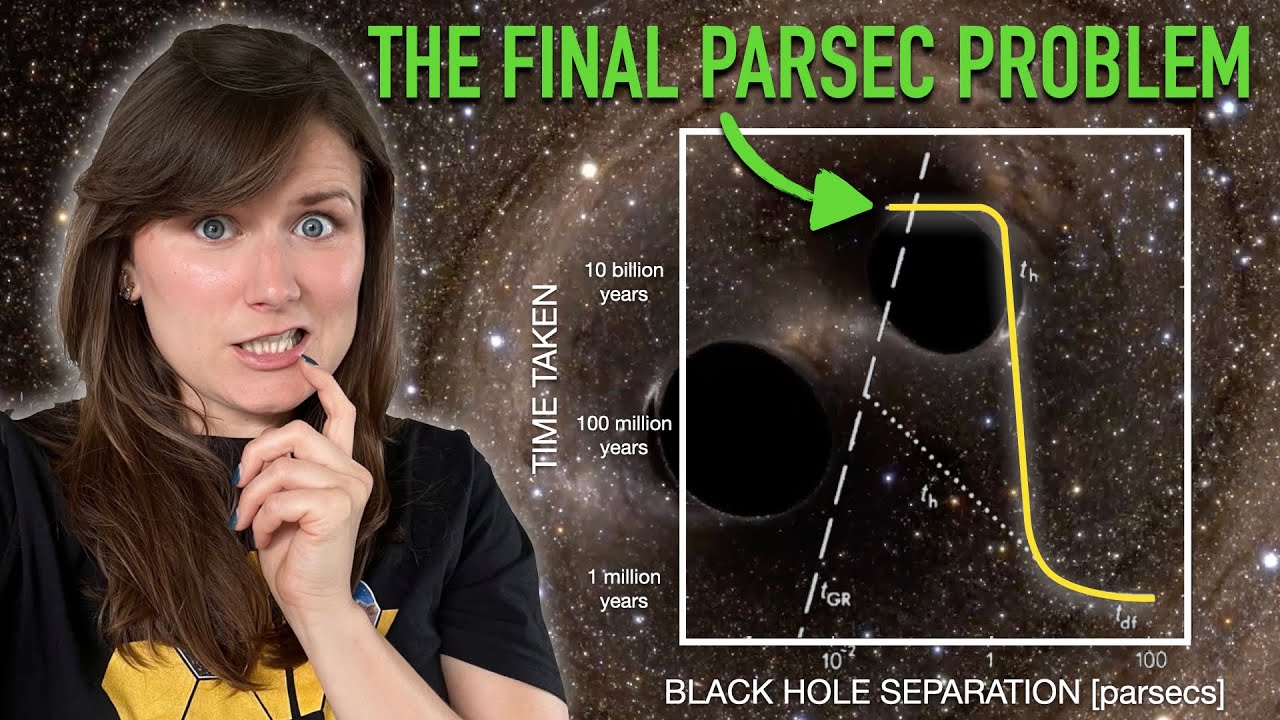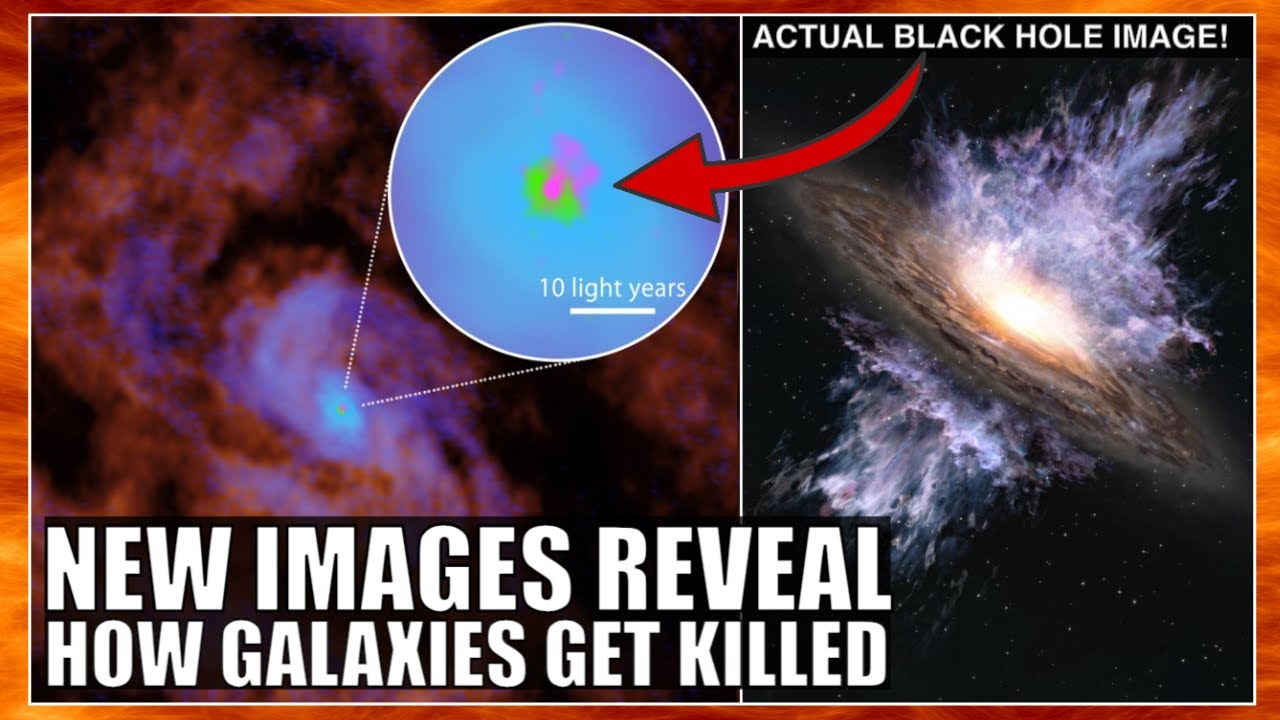Most, if not all, large galaxies in the present-day universe appear to have supermassive black holes at their centres, and to have evolved over the age of the universe through mergers of smaller galaxies. The remnants of galaxies “swallowed” by our Milky Way galaxy can be traced through the orbits of stars that formed in them around our galaxy. When galaxies merge, a process called “dynamical friction” causes objects in the original galaxies to lose momentum and sink toward the centre of the merged galaxy, randomising their orbits in the process. This is believed to be how giant elliptical galaxies form from the merger of spiral galaxies in galactic clusters.
When galaxies merge, their central black holes are expected to fall toward the centre of the merged galaxy and eventually coalesce into an even larger black hole, explaining the stupendous mass of the black holes found in some elliptical galaxies. Some galaxies have been found to have pairs of supermassive black holes at their centres, believed to be an intermediate stage toward merger.
But not so fast, say some astrophysicists. Supermassive black holes create intense gravitational fields in their vicinity, and a pair of black holes orbiting one another act like a giant spacetime blender, flinging out objects that approach them. Calculations show that once two black holes approach to within around a parsec (3.26 light-years) of one another, this effect will be so strong that they will clear their environs of stars, gas, dust, and derelict pirate spacecraft anywhere near to them. But it is gravitational interactions with such objects that cause dynamical friction and, without it, there’s nothing to make the two black holes spiral in further and eventually merge. (Gravitational radiation slowly saps energy from orbiting objects, but at distances of a parsec is utterly negligible even for objects as massive as these black holes, and would take many times the age of the universe to have a significant effect.)
So how do pairs of supermassive black holes eventually merge? Nobody knows—this is called the “final parsec problem”. Perhaps in the future study of the ultra-low-frequency gravitational waves emitted by these systems by pulsar timing arrays will provide clues to what is going on.
2 Likes
I couldn’t find the ratio of the combined volume of galaxies versus the total volume of the known universe. I was trying to get a handle on the likelihood of galaxies colliding. My naive impression is that it should be unlikely due to my guess that the ratio is very small. Only a wild guess, though. On the other hand, the distribution of mass (stars) is not uniform. They are arranged in a “clumpy” distribution, no?
2 Likes
Galaxies collide all the time. The distance between galaxies is relatively small compared to their size, and their gravity tends to pull them together into collisions. Further, galaxies form in dense clusters and superclusters of galaxies, so they start out closer together than they would be if equally distributed in the universe. The Milky Way has devoured dozens of smaller galaxies over its history, and is in the process of digesting several at the present time, including the Canis Major Dwarf Galaxy and the Magellanic Clouds. Further, in 4.5 billion years, the Milky Way and larger Andromeda (M31) galaxies will collide, likely forming an elliptical galaxy resembling neither’s present form.
In the early universe, everything was much closer together, and collisions and mergers were even more frequent than at present. It is believed that in this era large galaxies assembled through mergers of smaller, irregular proto-galaxies. Exploring this process is one of the goals of the James Webb space telescope.
2 Likes
I’ve been interested in the core cusp problem, which has some similarities to the last parsec problem.
Basically, if dark matter doesn’t interact with matter (even itself) there should be a “cusp” of dark matter near the center of galaxies near their black holes because the elliptical orbits of the dark matter around a black hole can never alter their orbits and fall into the black hole.
But the “cusp” near the “core” of galaxies is missing (at least usually-so). The concentration of dark matter flattens out as it approaches the galactic blackhole almost as though dark matter has a collision cross section and scatters into the event horizon. The upper bound on the collision cross section is pretty small but one must keep in mind the physical dimensions are in mass per area. (In the case of core-cusp upper estimates for dark matter, it is ± 1 order of magnitude 1cm^2/gram, which if one takes the geometric mean of this range, is strangely near the collision cross section of an ice cube 1cm on a side.)
Just did a quick search and this doesn’t seem to be a very popular approach for the last parsec problem. I suppose the reason is that dark matter supposedly gets swept out of the vicinity of the supermassive blackholes like ordinary matter.
3 Likes
The recent radio telescope discovery of the structure of supermassive black holes should probably be taken into account in regards to both the final parsec problem and the core cusp problem.
Also, in the case of the final parsec problem, I wonder if adequate account has been taken of the contribution of dark matter angular momentum relative to, say, supermassive black hole pairs. In other words, given (?) that dark matter is the vast majority of mass involved in these systems (?) might one need to take into account the dark matter flows in order to explain anything about their angular momentum?
3 Likes
See the 2021 Science Fair entry:
The Influence of Self Interacting Dark Matter on Galactic Formation and the Last Parsec Problem
Abstract:
The canonical cold dark matter paradigm has been shown to have significant phenomenological flaws leading to the “core-cusp” problem. It has been noticed that allowing the dark matter to self interact resolves this problem. In this paper we explore other consequences of the Self Interacting Dark Matter (SIDM) model. In particular, we investigate the effects of self interaction on the dynamical friction force incurred upon an object traversing dark matter halos. We show that SIDM has the added benefit of helping resolve “last parsec problem” allowing super massive black holes to go through binary inspirals within the Hubble time. This scenario can be tested by measuring SMBH inspiral rates at space based gravitational wave
detectors such as LISA.
4 Likes

